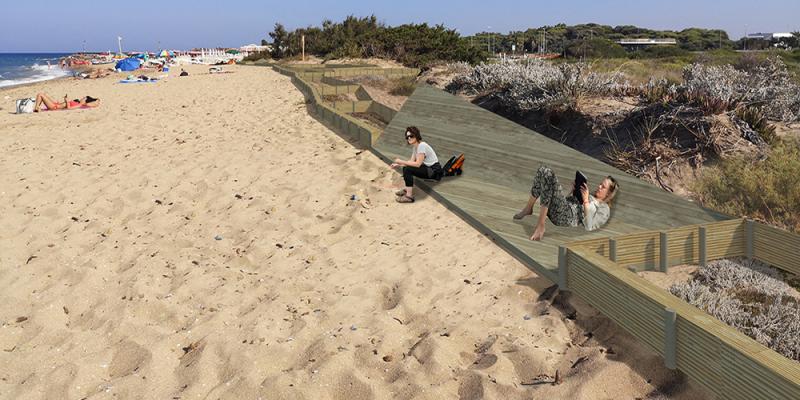
The call for the planning of an anti-erosion coastal system including art-driven reuse of wooden marine litter to be placed on a specific stretch of coastline has been completed for its shareholding in Italy. The City Planning manager of Municipality of Lecce, through his own administrative measure, adjudicated the contract to ARCHISTART Soc. Coop. – STP from Lecce (IT) for € 7.241,93.
The design process of the dune consolidation system is finished. Now, by virtue of the same action, the successful tenderer has to develop the executive planning starting with the effect since the day contract of assignment will be subscribed. It will define, for the first time, a working protocol of artistic waste recycling and recovery techniques for the reuse of beached vegetable biomass (first and foremost wood) in dune system management.
ARCHISTART Soc. Coop., social cooperative NPO, shall ensure direction of the work and safety coordination in the execution.
The winning project is entitled “Lu rusciu te lu mare” (The sound of the sea), it takes full advantage of all beached vegetable biomass but it needs other natural wooden material. It is inspired by the movement of the waves breaking on the beach. The entire arrangement of all the planned wooden palisades evoke an abstract interpretation of that movement. (See the photo gallery)
Bathers will be able to enjoy the anti-erosion system: they will have some shaded areas which allow them to pause in and other areas to put and use their beach umbrellas. All details are aimed at making greater use of tourism potential in the area.
Techno-economic feasibility project presented by ARCHISTART Soc. Coop. also has an additional new feature that is something new and very useful to get involved people and local associations and to increasing public awareness concerning the marine litter issue: the community educational yard.
All big main structures will be realized by specialized companies but the art-driven reuse of the wooden marine litter will be carried out by common people within the community educational yard activities even after the end of the intervention. And, in so doing, art installations will evolve over time to achieve a greater understanding and a closer relationship established with the local community.

